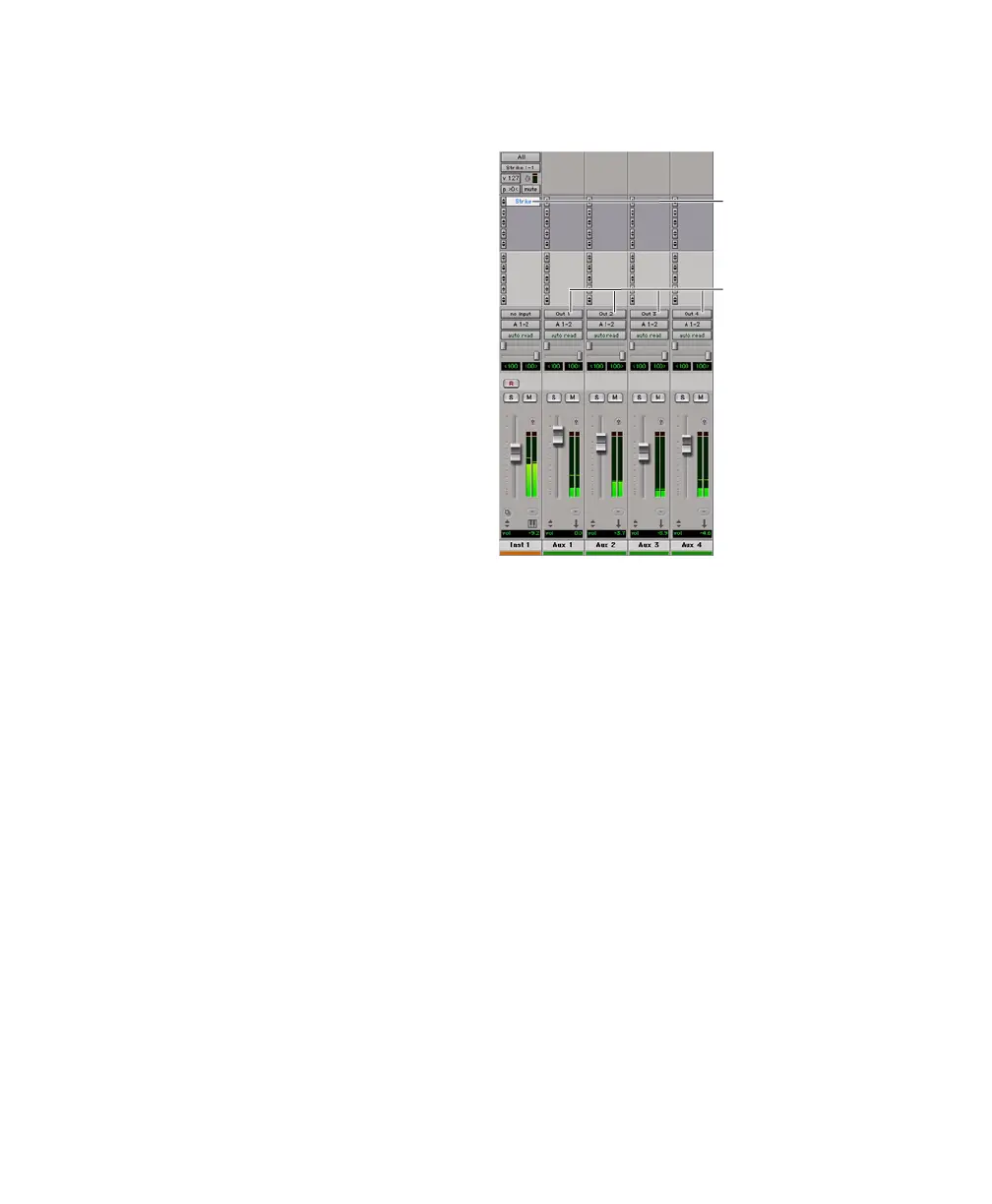Pro Tools Reference Guide652
To monitor and mix audio from an Instrument plug-
in with multiple audio outputs:
1 Use an existing or create a new Instrument
track.
2 Choose View > Mix Window > Instruments to
show the MIDI controls of the Instrument track.
3 Select a multi-output instrument plug-in from
the first Insert selector on the Instrument track
(such as Digidesign Strike).
4 The virtual MIDI node (port) for the instru-
ment plug-in should be automatically selected
for the Instrument track’s MIDI Output. If not,
select the MIDI channel and corresponding port
for the instrument plug-in.
5 In the plug-in window, assign the individual
audio outputs of the plug-in. (In the Strike plug-
in, channel outputs are assigned from the Mix
page.)
6 Create an Auxiliary Input track for each out-
put of the plug-in. Make sure the channel for-
mat of the Auxiliary Inputs corresponds to the
channel format of the plug-in outputs (mono,
stereo, or multichannel).
7 Set the inputs of the Auxiliary Input tracks to
receive the individual outputs of the plug-in.
8 Assign the outputs of the Auxiliary Input
tracks to the appropriate path or paths for mon-
itoring.
9 Adjust the Auxiliary Input faders to mix the
individual outputs of the plug-in.
Creating a Submix
A submix is created by routing multiple audio
sources to a common bus or output path. This
“submixes” the sources to a single path that can
be returned to an Auxiliary Input, where the
submix can be processed with plug-ins or exter-
nal effects processors.
Audio is routed to a submix by assigning any
combination of sends and track output to avail-
able bus or output paths.
Submixing with Track Outputs or Sends
You can use both track outputs and sends to
route audio for submixing, depending on
whether you want a discrete or send and return
submix.
Instrument plug-in with multiple outputs routed to
Auxiliary Input tracks
Instrument plug-in
Inputs from
plug-in outputs

